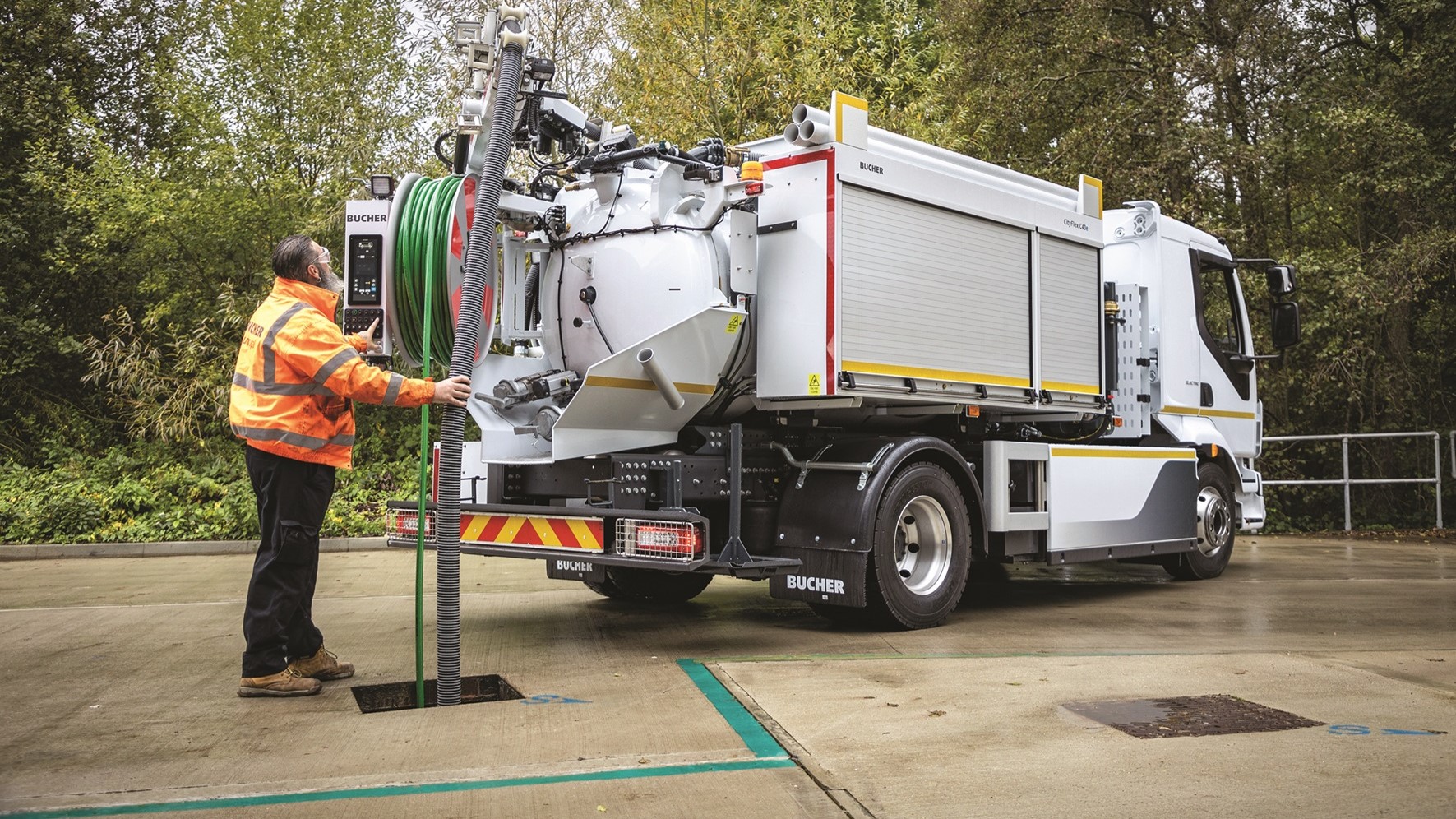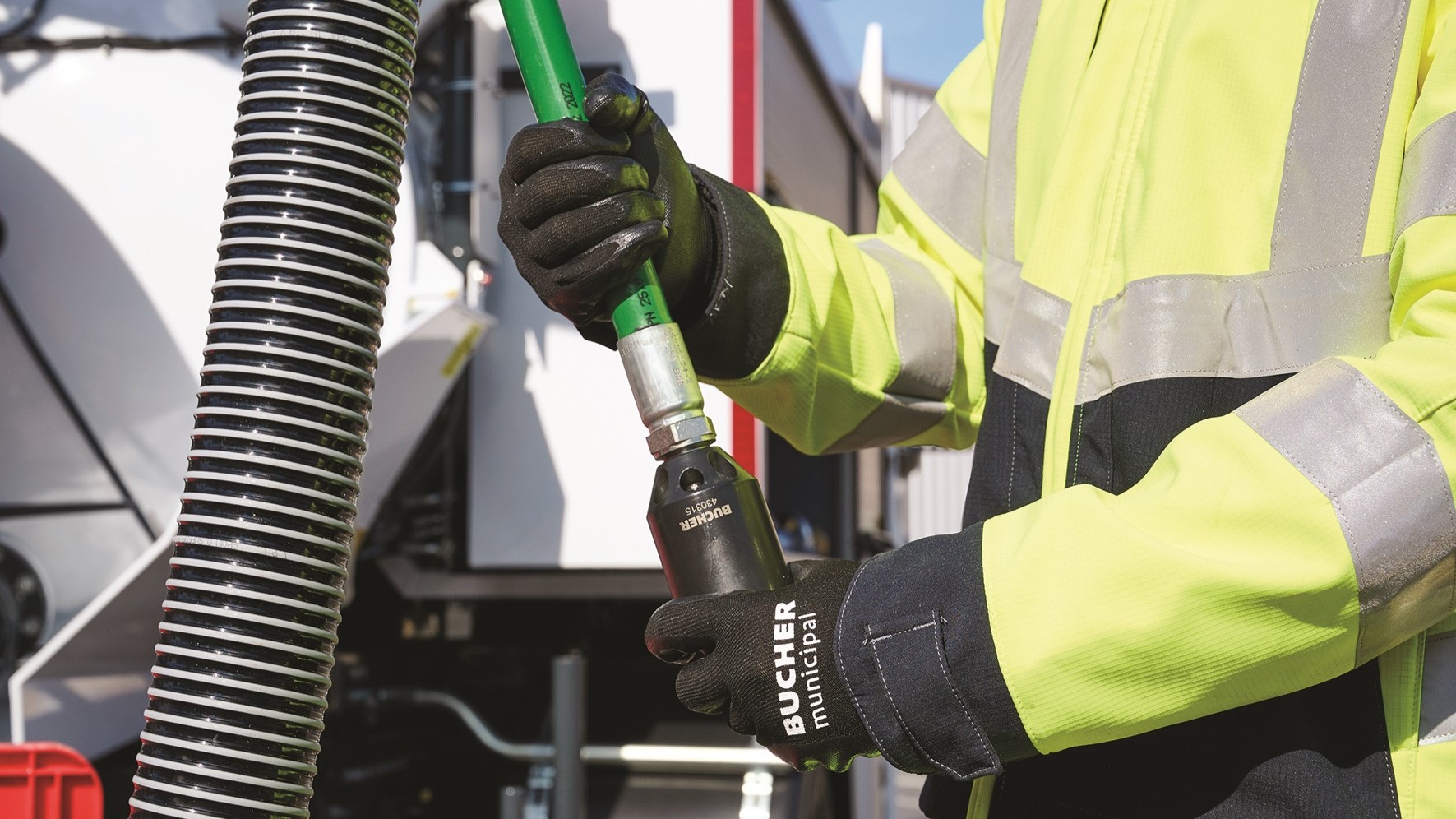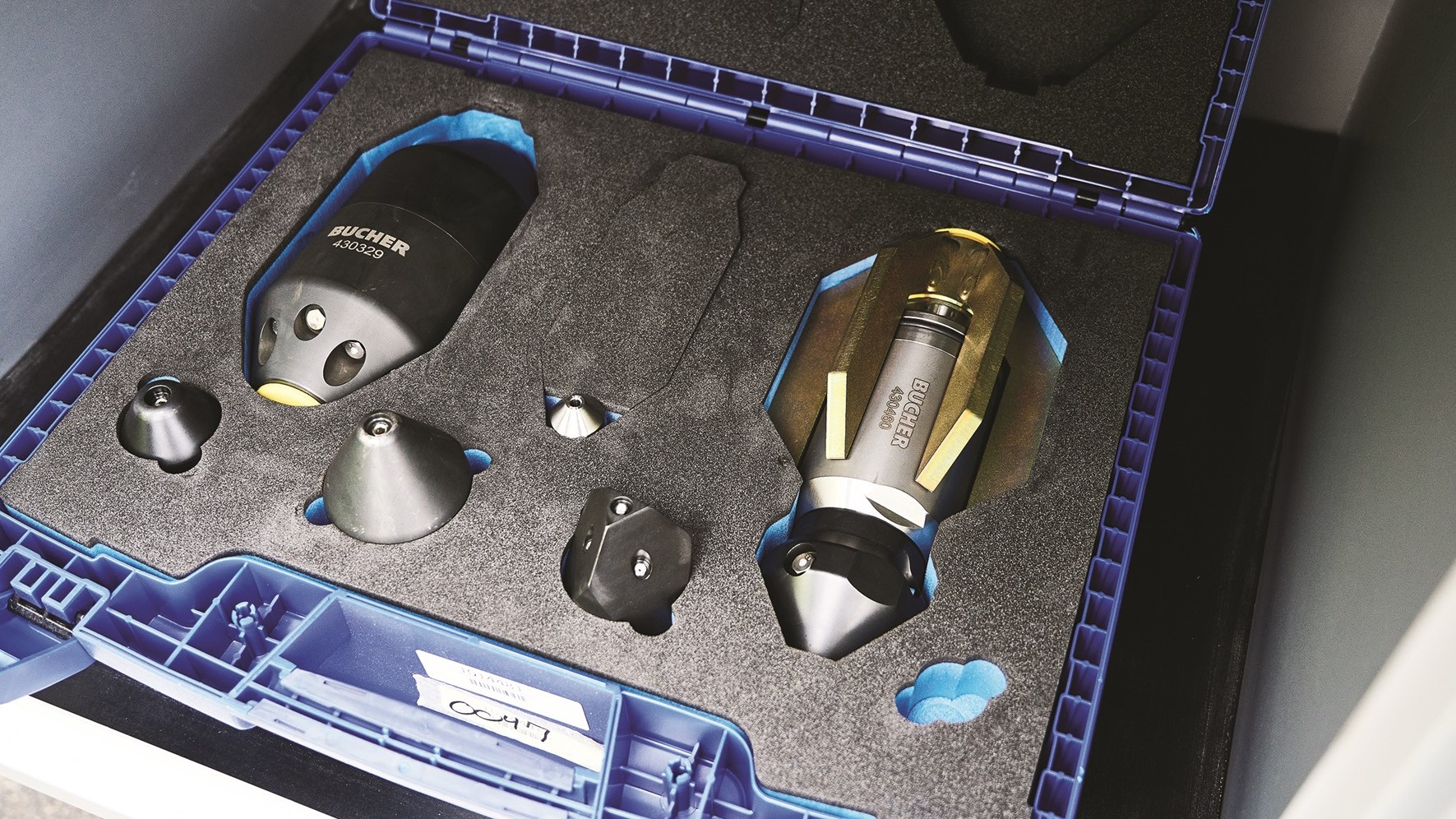Nozzles are one of the most valuable consumables used when cleaning sewers and pipes. Using the wrong nozzles can put the operator at risk, damage drains, and be costly if lost. Operating without the correct nozzle is not only ineffective and wasteful of resources like fuel, water, and operator time, but it can also damage the sewer cleaning vehicle and/or the city’s infrastructure, resulting in hefty fines that are passed on to the operator.
In the worst-case scenario, the operator can get severely injured when the wrong nozzle wreaks havoc on site. Therefore, selecting the right nozzle is imperative.
Each nozzle performs a specific cleaning task, so using just one nozzle is rarely enough to complete a cleaning job successfully. Because conditions change as you clean, you should change nozzles throughout the process. Three things decide how effective your cleaning job will be and how many resources you will need to complete the job – the nozzle, the hose, and the pump. If these things are in sync, you will lower your RPM on the truck and save fuel without lowering the water pressure out of the nozzle, a saving you can put directly in your pocket while doing something good for the environment.
With the sheer number of nozzles available for your unit, where do you start?
Forward-facing jetting nozzles are perfect for routine cleaning.
They are good for cleaning pipes after blockages have been removed to make sure nothing is left behind or they can be used to remove smaller amounts of sludge and deposits.
Blockages such as grease, oil, rag, soap, roots, and residual deposits can be dealt with by using rotating nozzles. The water jets use a cutting motion rather than flushing, the spinning jets of water act like a knife spinning around the pipe to cut through the deposit and break it up into smaller pieces to be flushed away. This is needed if combating something such as root mass – a flushing stream would just bend the roots as opposed to slicing.
For a more effective spinning nozzle, the bulldog anti-blast should be favoured. The head of this nozzle rotates, and as it spins, cuts away fat, grease, roots, etc. Where this nozzle outperforms is when cleaning close to houses; the chance of blowback is removed. This is possible by eliminating pressure equalisation so there isn’t a flood of water coming up into people’s homes. It is a very low-maintenance nozzle because it uses magnets instead of oil or clutch breaking. This means it won’t break as easily and won’t need servicing, just a clean.
If pipes are blocked from thick organic matter or deposits are harder than expected, a tougher approach is usually recommended such as chains on rotating nozzles or chain flail. With a chain flail, the body of the nozzle sits tight to the pipe and the chain spins round and round, this motion plus the powerful chains means that the nozzle can get through entire root masses, limescale, and cement wash.
If you want to de-silt by removing loose gravel, rocks, sand, and soft deposits, a grenade bomb nozzle is recommended. This nozzle sits at the bottom of the pipe and powerfully flushes sewer lines backward to clear all the small deposits.
To open lines or fully blocked drains, a pointed nozzle is best. This nozzle is angled at the front to penetrate completely blocked pipes. It can make an opening through interlaced roots and frozen pipes. If the obstruction is much harder such as solidified concrete or a massive build-up of limescale due to neglect, then a milling cutter nozzle is recommended. The front of these nozzles have discs that contain carbide or diamond teeth that cut the obstruction away as it spins.
Solidified blockages that aren’t completely blocking the pipes can be combated by using vibrating nozzles. These sit on top of the deposit and break it up by bouncing rapidly. This motion breaks up the surface of the obstruction to enable it to be sent back on the jets of water to be sucked up by the operator.
Cutting ball nozzles can also be used against these harsher blockages. These nozzles are a golden steel globe the size of a cricket ball that spins. They have undercut razor-sharp channels that shave away whatever is on the pipe, such as cement residue, roots, or limescale. There is also the option to make it vibrate to give it an additional advantage.
For the cleaning of flat-bottomed drains (such as beany blocks), a flounder nozzle should be used. This nozzle sits on the flat bottom of the drain and glides along seamlessly. It is particularly effective for the removal of mud and loose rubble that is commonly found in kerbside drains. Similarly, if a slot drain needs to be cleaned, a drainage channel nozzle is the perfect solution. It cleans effectively by gliding along the bottom, but the water flows straight backward, so it doesn’t shoot up the drains above.
For large pipes (anything over 300mm), such as culverts, a scraper is used. These are very heavy, large nozzles. The weight keeps the nozzle on the bottom of the pipe with huge powerful jets that dislodge heavy or large debris like house bricks and even shopping trolleys.
Ejector nozzles are used for pipes full of water when a higher flow rate is needed. Due to utilising something called the venturi effect, the nozzle can increase the flow rate of the water passing through by 500%. This nozzle sits underneath the water line to work to its full capacity; it has a large aperture hole in the front with rear-facing water jets that draw in the water, and by having the water pass through a tight tube, the flow rate increase is so powerful that a 300l/min pump can turn into 1500 l/min. This effect is only capable when the nozzle is fully submerged, or it will only be as powerful as an ordinary nozzle.
Guiding nozzles are designed to travel more easily through connections in pipes and directional changes in pipes where there may be a split. Directional jets are used to change the direction of the nozzle one way or another. However, a camera is needed to successfully guide the nozzle to the new pathway as otherwise it cannot be seen in the sewer.
Having the correct nozzle for the correct application reduces the likelihood of structural damage to property and pipework. It also reduces the risk of operator injury, especially when implementing safety features such as safety liner extensions. These nozzle extensions are hollow solid bars that elongate the nozzle to remove the possibility of the nozzle turning in the pipe. Nozzles turning in the sewer are the most likely cause of operator injury and fatality. The safety liner elongates the nozzles along the hose, making it too long for turning in the pipe but without impeding performance.
Speak to the Bucher Sewer Cleaning service team to find out more about how you can optimise your machine with the right nozzle-hose-pump combination.





